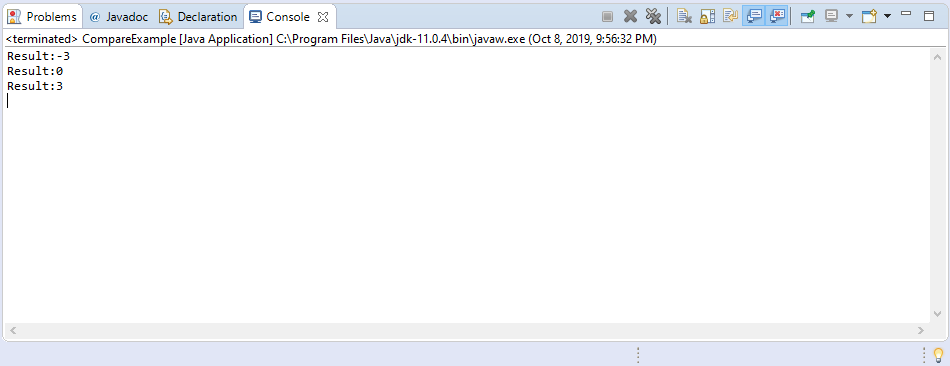java.lang.Short compare(short x, short y)
Description
The compare(short x, short y) method of Short class compares two short values numerically. The value returned is identical to what would be returned by:
Short.valueOf(x).compareTo(Short.valueOf(y))
Make a note that the compare(short x, short y) method of Short class is static thus it should be accessed statically which means the we would be calling this method in this format:
Short.compare(short x, short y)
Non static method is usually called by just declaring method_name(argument) however in this case since the method is static, it should be called by appending the class name as suffix. We will be encountering a compilation problem if we call the java compare method non statically.
Method Syntax
public static int compare(short x, short y)
Method Argument
| Data Type | Parameter | Description |
|---|---|---|
| short | x | the first short to compare |
| short | y | the second short to compare |
Method Returns
The compare(short x, short y) method of Short class returns the value 0 if x == y; a value less than 0 if x < y; and a value greater than 0 if x > y.
Compatibility
Requires Java 1.7 and up
Java Short compare(short x, short y) Example
Below is a simple java example on the usage of compare(short x, short y) method of Short class.
package com.javatutorialhq.java.examples;
/*
* This example source code demonstrates the use of
* compare(short x, short y) method of Short class.
*/
public class CompareExample {
public static void main(String[] args) {
// assign new short primitives
short x = 12;
short y = 15;
short z = 12;
// x less than y
int result = Short.compare(x, y);
System.out.println("Result:"+result);
// x equal to z
result = Short.compare(x, z);
System.out.println("Result:"+result);
// y greater than z
result = Short.compare(y, z);
System.out.println("Result:"+result);
}
}
Basically on the above example, we have assigned 3 short primitive x,y,and z. There are 3 examples provided, the first one is when we compare x and y, the second one is x and z, and the last is y and z.
In comparing x and y, the result is -3 which is the difference between x and y. Since the result is less than 0, then we can conclude that x is less than y.
On the second comparison between x and z, the result is 0. As you have already noticed the value of x and z is the same.
For the 3rd example, the comparison is done between y and z. The result would be 3 which is greater than 0. This result means that y is greater than z.

